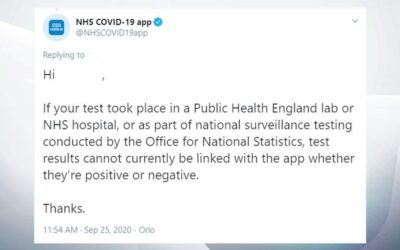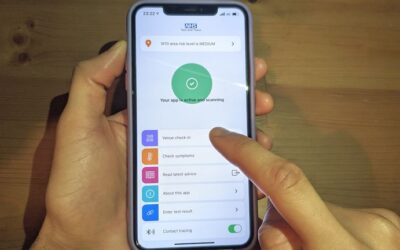More than 10 million people have downloaded the NHS contact-tracing app since it launched on Thursday, despite it suffering a problem that left tens of thousands of test results unlogged.
The app, which Health Secretary Matt Hancock described as an “important step forward” in tackling COVID-19, had been downloaded six million times on its first day and 10 million by Sunday, the Department of Health said.
Mr Hancock described the figures as an “absolutely fantastic” response.
Is the NHS app up to the job?
But download numbers aside, the app has had a less-than-fantastic start.
Mr Hancock’s comments were made a day after an important fix for the app was rolled out – it solved an issue that had prevented users in England from being able log test results.
Advertisement
On Friday, the app’s developers admitted it had not been able to link more than 60,000 coronavirus tests carried out that day – just under a third of England’s total – to its systems.
They confirmed the glitch after one user tweeted that he was being asked to enter a code he did not have in order to log his result.
More from Covid
The app includes a link to enter a code that people should receive via email or text message from the testing service when their result comes through.
It asks users to self-isolate for 14 days if it detects they have spent 15 minutes or more in close proximity to someone who has tested positive.
But before the glitch was solved, it was only human contact tracers who could reach out out to those affected by someone testing positive in an NHS hospital, Public Health England lab, or through a surveillance study.
Image: The contact tracing app alerts users via Bluetooth technology
The glitch appeared to undermine the app’s central role of warning people of previous contact with a positive case.
While anyone in England and Wales can download the app, the problem existed only in England.
In a statement released on Saturday, a health department spokesperson implied it was solved, saying anyone with a positive test result can now log their result on the app.
“A minority of people, such as hospital patients, who were unable to log their positive result can now request a code when contacted by NHS Test and Trace to input on their app,” the statement read.
But as of Sunday, people who book a test outside the app still could not log negative results.
App ‘makes the UK safer’
:: Subscribe to the All Out Politics podcast on Apple Podcasts, Google Podcasts, Spotify, Spreaker
Regarding other app features, Mr Hancock said more than 1.5 million venue check-ins were recorded on Saturday.
More than 460,000 businesses had downloaded and printed QR code posters that can be scanned to check-in. These QR codes allow contact tracers to reach multiple people if an outbreak is found.
Mr Hancock described the “enthusiastic response” of over 10 million downloads in a few days as “a strong start” and “absolutely fantastic,” but called on more businesses and people to follow suit.
“The more of us who download it the more effective it will be,” he said.










